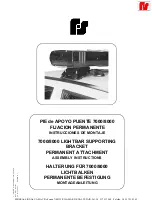
GMC Sierra/Sierra Denali 2500 HD/3500 HD Owner Manual (GMNA-
Localizing-U.S./Canada/Mexico-14632286) - 2021 - CRC - 11/19/20
214
Driving and Operating
.
Wait until the vehicle is parked to
retrieve items that have fallen to the
floor.
.
Stop or park the vehicle to tend to
children.
.
Keep pets in an appropriate carrier or
restraint.
.
Avoid stressful conversations while
driving, whether with a passenger or on a
cell phone.
{
Warning
Taking your eyes off the road too long or
too often could cause a crash resulting in
injury or death. Focus your attention on
driving.
Refer to the infotainment section for more
information on using that system and the
navigation system, if equipped, including
pairing and using a cell phone.
Defensive Driving
Defensive driving means
“
always expect the
unexpected.
”
The first step in driving
defensively is to wear the seat belt. See
.
Assume that other road users
(pedestrians, bicyclists, and other drivers)
are going to be careless and make
mistakes. Anticipate what they may do
and be ready.
.
Allow enough following distance between
you and the driver in front of you.
.
Focus on the task of driving.
Impaired Driving
Death and injury associated with impaired
driving is a global tragedy.
{
Warning
Drinking alcohol or taking drugs and then
driving is very dangerous. Your reflexes,
perceptions, attentiveness, and judgment
can be affected by even a small amount
of alcohol or drugs. You can have a
serious
—
or even fatal
—
collision if you
drive after drinking or taking drugs.
Do not drive while under the influence of
alcohol or drugs, or ride with a driver
who has been drinking or is impaired by
drugs. Find alternate transportation
home; or if you are with a group,
designate a driver who will remain sober.
Control of a Vehicle
Braking, steering, and accelerating are
important factors in helping to control a
vehicle while driving.
Braking
Braking action involves perception time and
reaction time. Deciding to push the brake
pedal is perception time. Actually doing it is
reaction time.
Average driver reaction time is about
three-quarters of a second. In that time, a
vehicle moving at 100 km/h (60 mph) travels
20 m (66 ft), which could be a lot of
distance in an emergency.
Helpful braking tips to keep in mind include:
.
Keep enough distance between you and
the vehicle in front of you.
.
Avoid needless heavy braking.
.
Keep pace with traffic.
If the engine ever stops or a brake fault
occurs, the brakes may lose power assist.
More effort will be required to stop the
vehicle. It may take longer to stop.
















































